How restorative justice works at a MPS school, a decade in
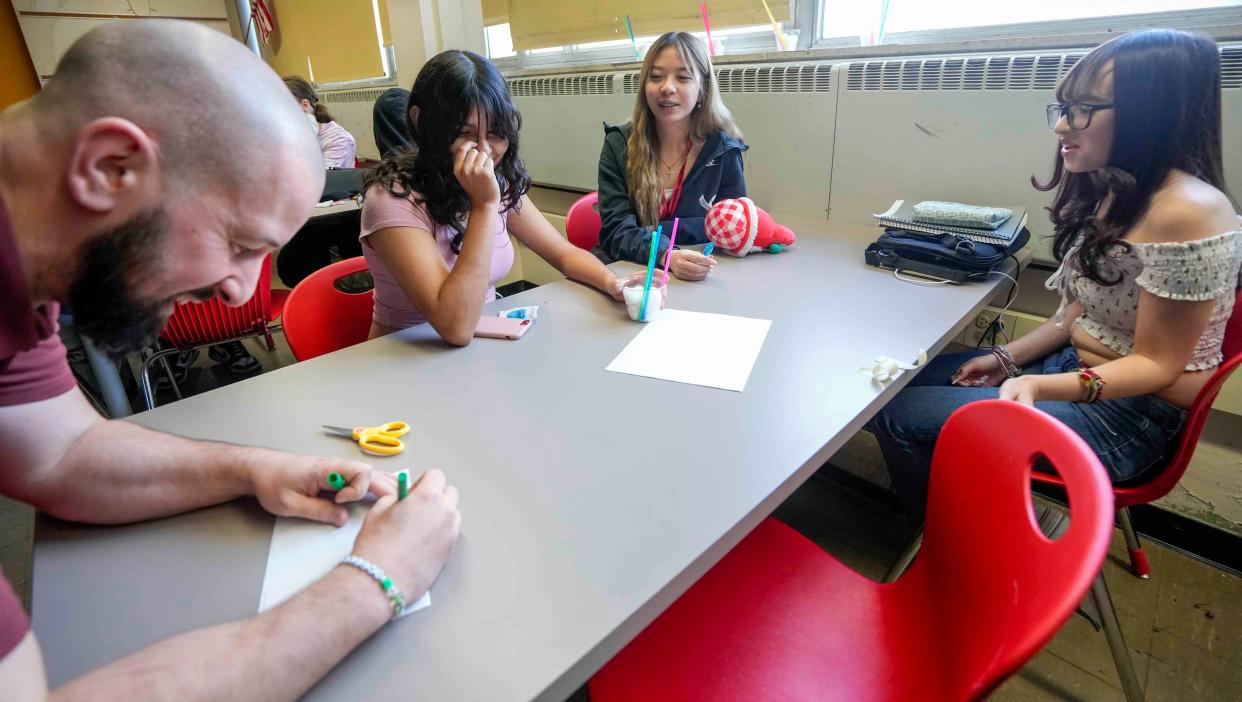
On a winter Monday morning at Audubon High School in Milwaukee, three ninth-graders huddled and fussed over an egg named Billy Bob.
Amber Sengsourisack used a marker to draw the egg’s anxious facial expression. Her childhood friend, Sophia Duong, and a new friend, Nathaly Alvarado, scrunched scraps of paper and cotton balls into a plastic cup, which would be the egg’s nest for a 3-foot drop.
Billy Bob cracked on the first drop. The students memorialized him: “R.I.P. Billy Bob. A very chill cowboy and princess.”
The egg drop wasn’t for science, but for something that can be a greater achievement in a high school classroom: building relationships, and ultimately a sense of safety.
In a class called “Restorative Practices,” the activity came minutes after the students were asked to write in a journal about what makes relationships healthy or unhealthy, and just before they watched a video about the process of forgiveness.
Sengsourisack and her friends said the class activities make them feel more comfortable with each other, which is important in a room where they contend with personal and introspective topics.
“I feel safe in here,” Duong said.
The class lays the foundation for Audubon’s unique system of restorative practices, which staff and students have been practicing for over a decade as a way to foster a safer school and reduce suspensions. Every student takes the Restorative Practices course, and some students go on to lead circles where they help resolve conflicts at school before they escalate.
Restorative justice is a framework that focuses on repairing the damage from breaking a rule or committing a crime, instead of punishment. It works to have individuals accept responsibility for their actions and rebuild community relationships all while including those harmed in the process, according to the University of Wisconsin Law School. What that looks like can vary, including mediation, conflict resolution programs, reparations and more.
Restorative practices have spread through school districts across the country in recent years. In the last school year, the Wisconsin Safe & Healthy Schools Center trained over 300 school staff, from over a quarter of Wisconsin's school districts, in restorative practices. The department is on pace for similar numbers this year, a spokesperson said.
The restorative practices teacher at Audubon, Andrew Lazzari, said the class has become especially important for helping students talk with one another and build relationships after the social setbacks and stress of the pandemic, which has had lasting effects on student mental health and participation in school.
In the most recent state data, about 52% of Wisconsin high school students surveyed in fall 2021 said they'd experienced symptoms of anxiety in the past year, and 35% had symptoms of depression. Compared to before the pandemic, students in 2021 were less likely to say they felt like they belonged at school, had adults they could go to for help, or participated in school activities.
Research has found restorative practices can lead to better attendance and stronger relationships between students and teachers. It can also reduce suspensions and expulsions, which research has found is closely linked with depressive symptoms.
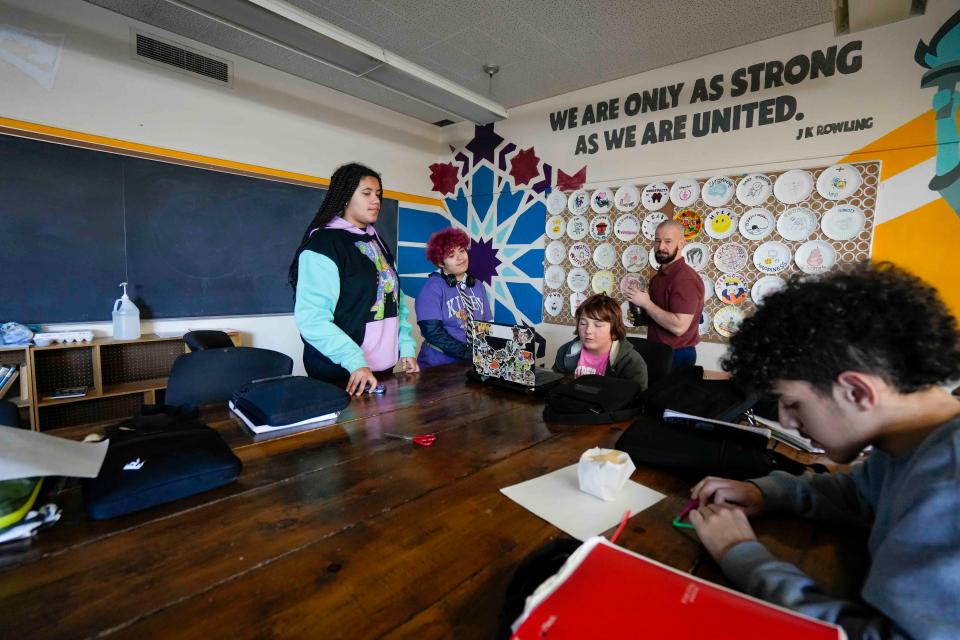
Restorative practices course is one piece of MPS' shifting safety strategy
MPS, like many school districts, has long grappled with the question of what creates safety in its schools, particularly when its own students are viewed by some as the threat. The answers have evolved with a greater understanding of mental health, trauma responses, and the nuanced struggles that shape how students behave.
In recent years, school board members in Milwaukee have campaigned against traditional punitive measures like suspensions and policing in favor of more supportive approaches like mental health services and restorative practices.
Students have marched and lobbied for this shift, successfully pushing MPS to cut its last contract with police in 2020 and invest more in mental health services. The district also faced a federal probe a decade ago that showed it was overly suspending Black students. Administrators vowed to change that, with restorative practices and counseling as pieces of the puzzle.
Movement has been slow; the disparities in suspensions haven’t budged. Now, MPS is being forced to bring police back into its schools in January under a new state law. MPS school board president Marva Herndon opposed the law but said she plans to cooperate.
Meanwhile, the district plans to continue expanding restorative practices. In 2022, MPS created a Department of Restorative Practices, which is working with a cohort of 13 schools in an "exploration phase" of assessing their communities' "ability and commitment" to implement the practices, a district spokesperson said.
How restorative practices work at Audubon High School
One of the district's oldest practitioners, Audubon High School has used restorative practices for at least a decade. When Lazzari started at the school nine years ago, he learned how to teach it from a colleague.
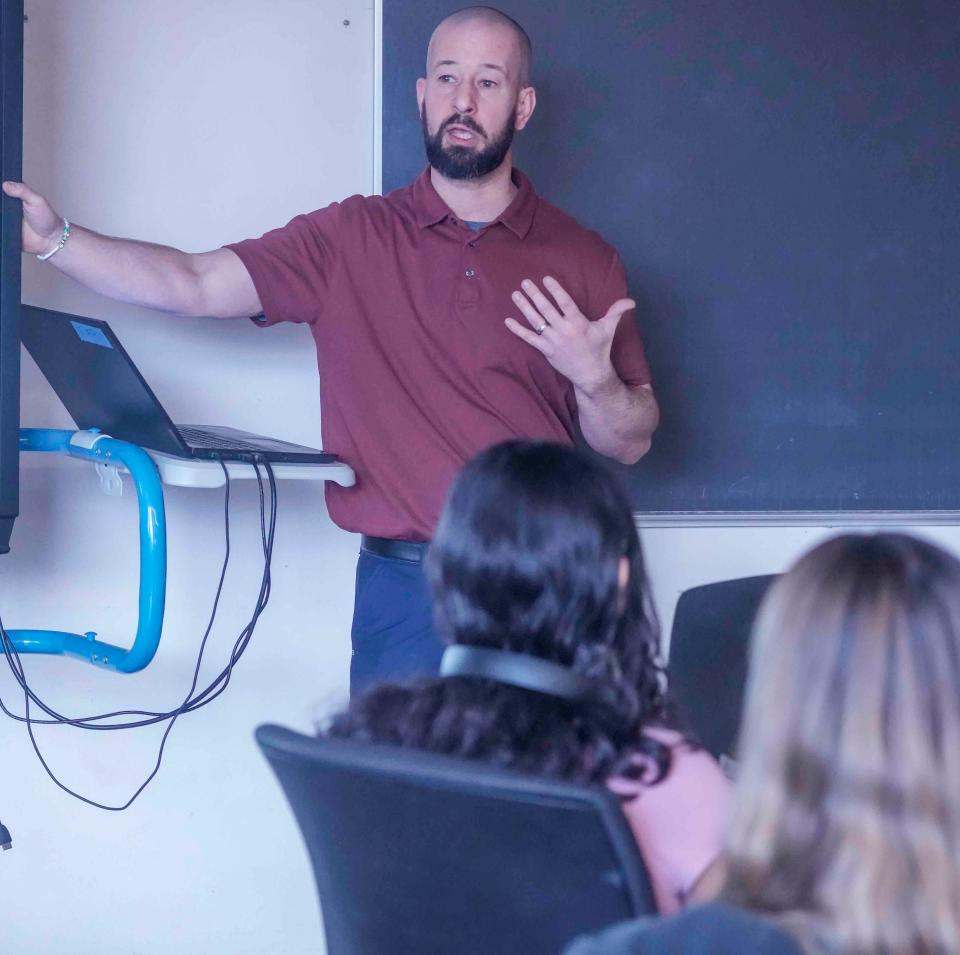
They and other teachers built the curriculum for the Restorative Practices course, which is generally required for ninth-graders. If students transfer into the school later, like 12th-grader Elias Moreno, they take the course later. The goal is to help students build positive relationships and learn strategies for resolving conflicts.
"I would say I learned how to look at things in a different perspective, being able to be open-minded to be able to engage with other people while being mindful of what they got going on," Moreno said.
Eleventh-grader Liam Aponte said he learned "how to be empathetic towards people and how to resolve conflicts in a way that doesn't involve yelling or getting aggressive."
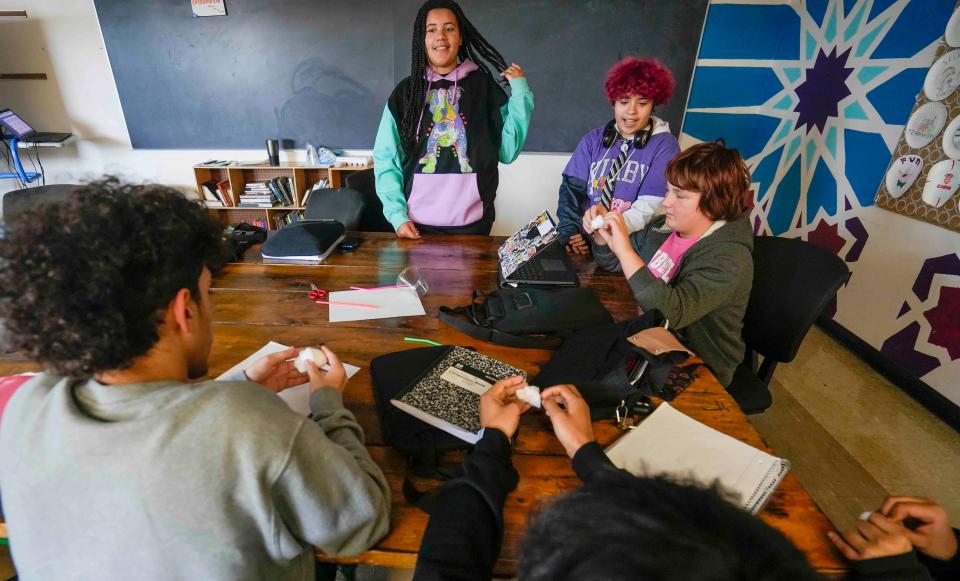
About five years ago, Lazzari and another teacher added a leaders program, which trains students to lead "restorative circles," where they help other students resolve conflicts. What happens in those circles is called "restorative justice."
Moreno is one of the leaders. When Moreno or another seasoned student leads a circle, Lazzari said he sits in the room as a teacher but he lets the student lead. Moreno sets up two items, like a stress ball or stuffed animal, to serve as a "talking piece" that people pass when they talk, and a "center piece" that they can look at while they talk, if they don't want to look at each other.
Then each student shares their perspective about what's happening in a conflict. They discuss what harm has been done, and together they come up with strategies to make amends and move forward.
"We try to stay away from blaming each other," Moreno said.
Moreno has led circles mainly for middle school students. In one case, students had been arguing for days in school. In a circle, Moreno helped them talk through their grudges, and about 30 minutes later, Moreno said they "hugged it out and went their separate ways."
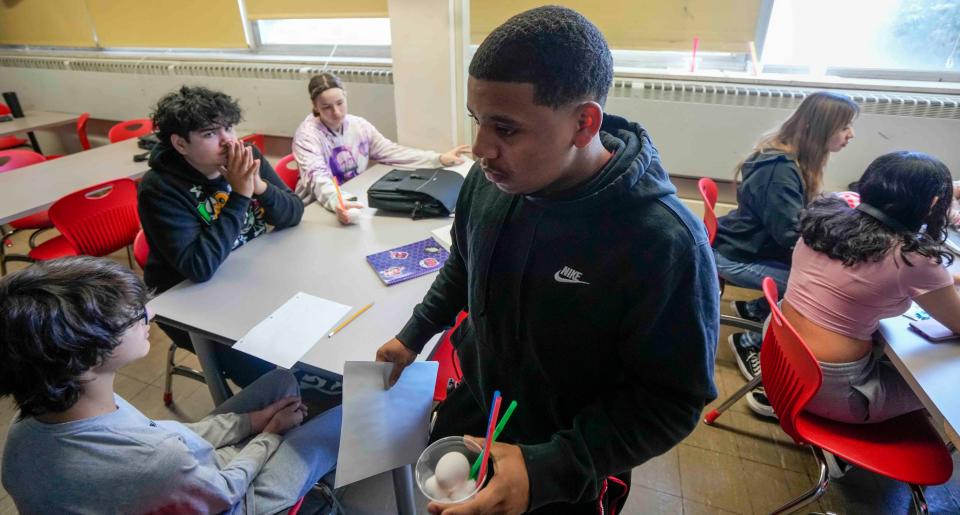
During another recent circle, Lazzari said students were in a conflict entirely on social media — something increasingly common since the pandemic. When the students talked it out, Lazzari said they realized one student thought the other student's post was about her, but it was actually unrelated.
After spending so much time outside of school buildings, when students had to learn remotely during the pandemic, Lazarri said, students often just need help communicating with each other. He hopes the communication skills they learn in the class and the circles will carry them outside of high school, too.
"Conflict is a part of life," he said. "It might not always be sitting down and having a circle, but learning how to see things from another person's perspective."
When Moreno graduates, he plans to study business. He expects his background in restorative practices will help him in his career path.
"Being able to know restorative practices at a young age already, it just helps run a business or just be in a business environment; it makes it way easier to be able to solve problems and communicate," he said.
Instead of suspending students, Audubon principal turns to restorative circles
Principal Holly Jackelen credits the program for empowering her school to keep a lower suspension rate.
In the 2021-22 school year, the most recent year of reported data, Audubon had a rate of seven suspensions per 100 students. Districtwide at MPS, there were 34 suspensions per 100 students that year.
Back in the 2008-09 school year, Audubon had a suspension rate of 10% and the districtwide rate was 29%, according to DPI data.
When Jackelen started working at Audubon High School six years ago, she went through what she called a "paradigm shift" as she learned about the school's restorative practices. But it didn't take long for her to get on board.
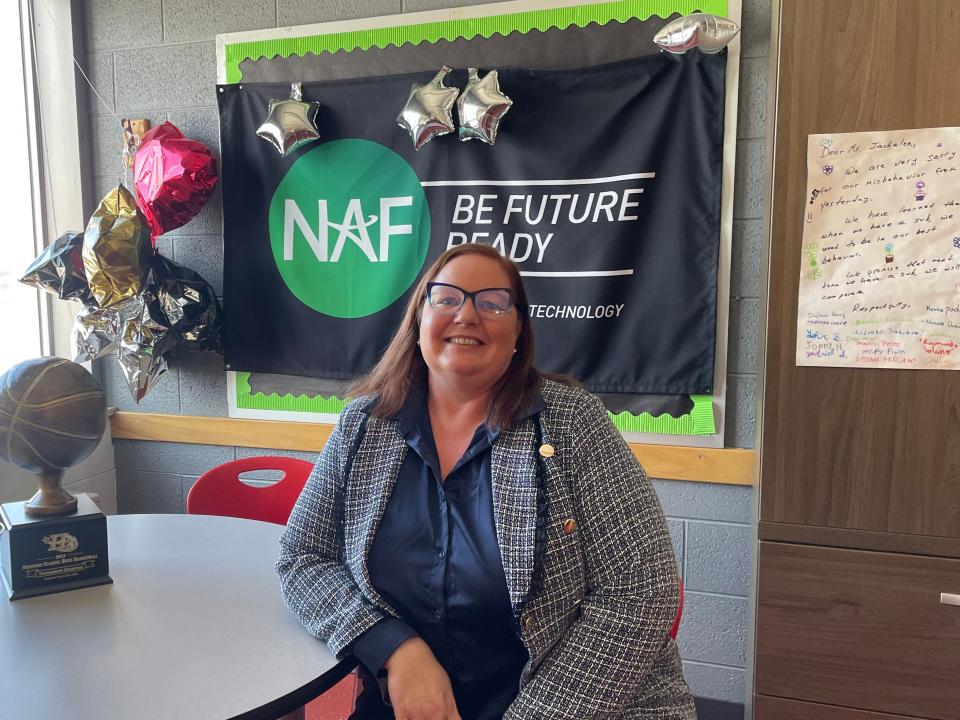
"Once you see it in action, you're like, how is this not happening all over the place?" Jackelen said. "That's all it took for me, and I'm like, how can we make it grow?"
The approach fit with how Jackelen already sought to build trusting relationships with students.
"I believe it's my professional and personal responsibility to make sure that someone feels welcome, heard and seen," she said.
Jackelen said there are times where the district's code of conduct policy requires suspension, but whenever possible, she turns instead to a restorative circle. When a student does get suspended, Jackelen still likes to have a circle when that student returns — sometimes called a "reintegration circle."
"I do not like to suspend, because it is not changing the behavior," Jackelen said. "You're not getting to the root of the problem, and that's what you need to get to. And if you've built that trust with that child, you can get it. Relationship building is everything."
Moreno, who had transferred from a school with more violent fights, said he thought other schools would benefit from a similar restorative practices program.
"If this was moved into different schools, it would stop a lot of the violence," Moreno said. "We would decrease suspension rates, the rates of how many people get in trouble or expelled, and fights."
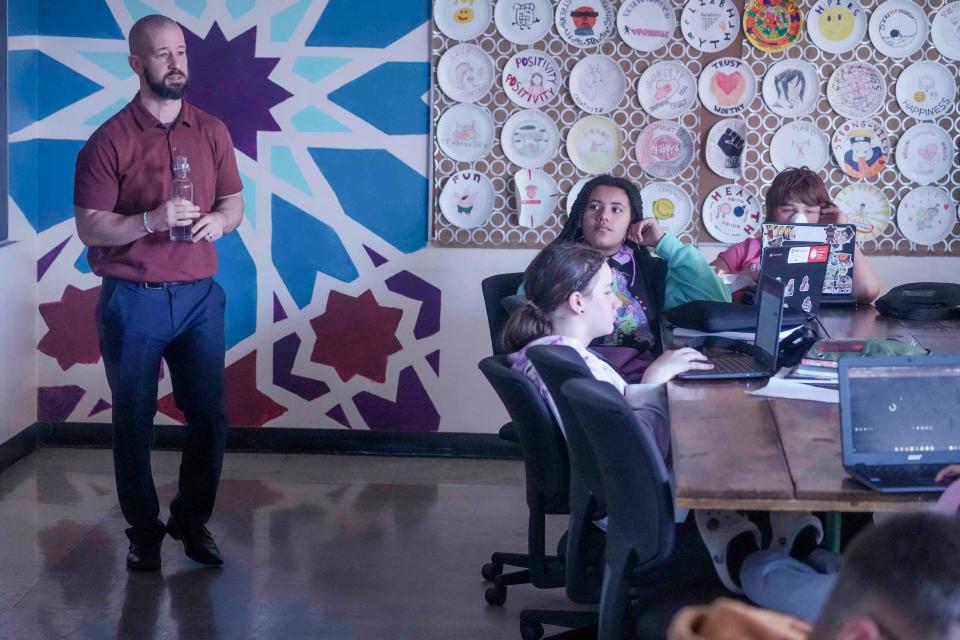
What research says about restorative practices
Catherine Augustine, a senior researcher at RAND Corp. who studied a restorative practices program in Pittsburgh, said it can be hard to judge the success of such programs — partly because it depends on how a district defines success.
"I do think that restorative practices can improve relationships; I 100% believe that," Augustine said. "The how to do it, and how to balance that with other pressures in schools, I don't yet have an answer for."
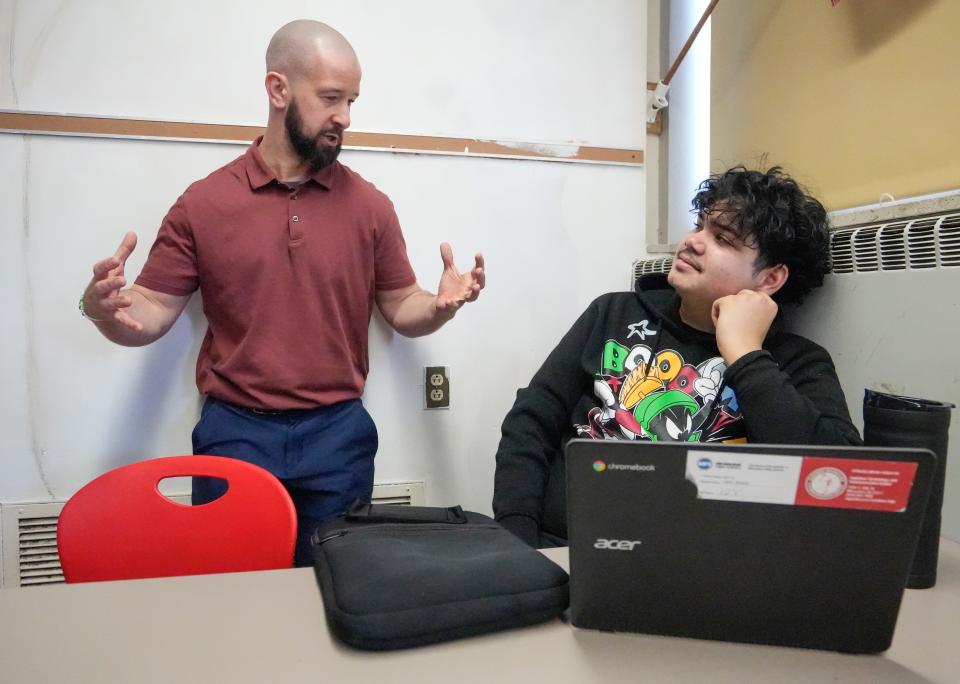
In the Pittsburgh randomized control trial, Augustine found that schools with restorative practices programs were able to reduce suspensions and reduce disparities in suspension rates by race and income. The school transferred fewer students to alternative schools, attendance improved, and teachers said their relationships with students improved. At the same time, academic outcomes did not improve, and even worsened for middle grade levels.
Despite mixed results, Augustine's team found the program to be "promising" because of the reduction in suspensions. Many other school districts have also reported a drop in suspensions after implementing restorative practices.
Other research has illuminated a long of arc of consequences that can stem from a suspension. The lost time in the classroom can snowball into academic failures. It also makes a student more likely to be suspended again, expelled, and even arrested, according to restorative justice scholar Mara Schiff, associate professor at Florida Atlantic University.
Schiff has argued that restorative justice "offers students a means to build empathy, earn redemption and rebuild their dignity through mature reparation of harm."
Moreno is living proof of the model at work, he said. In middle school, if he saw a conflict, there was a good chance he would be there "hyping up the situation," he said. Now, he's often the one to intervene.
How to add restorative practices in Wisconsin schools
Schools can find restorative practices training from the Wisconsin Safe & Healthy Schools Center, a collaboration between the state Department of Public Instruction and the Cooperative Educational Service Agency Statewide Network.
WISH offers Restorative Practices for Educators, a two-day training about fostering positive culture, community-building and strong relationships; and Facilitating Formal Conferencing, a two-day training for making preparations and running formal conferences to repair harm.
The center also offers guidance for implementing restorative practices throughout a school district. For more information, about implementation supports, contact Katharine Reid, kreid@cesa4.org.
Green Bay Press-Gazette reporter Danielle DuClos contributed to this report.
Contact Rory Linnane at rory.linnane@jrn.com. Follow her on Twitter at @RoryLinnane.
This article originally appeared on Milwaukee Journal Sentinel: How restorative justice works at MPS' Audubon High School in Milwaukee

